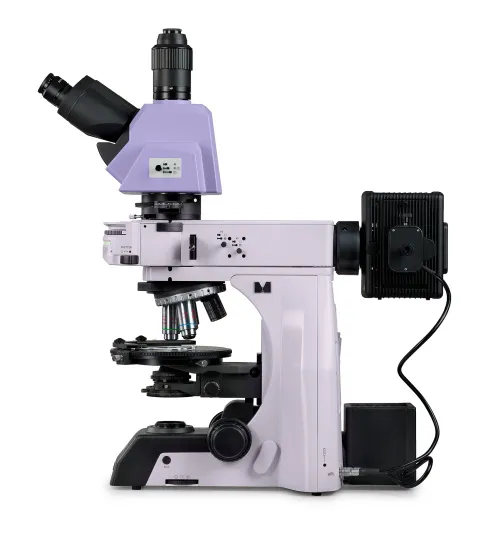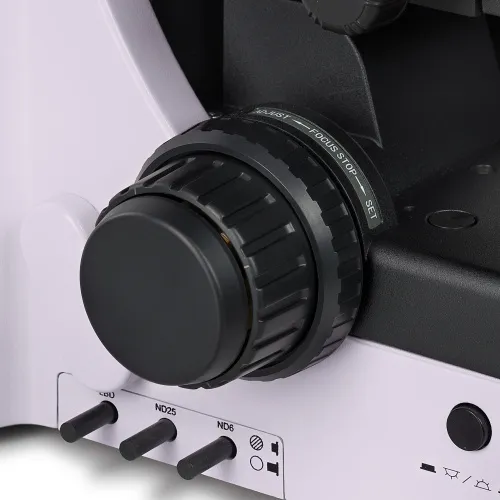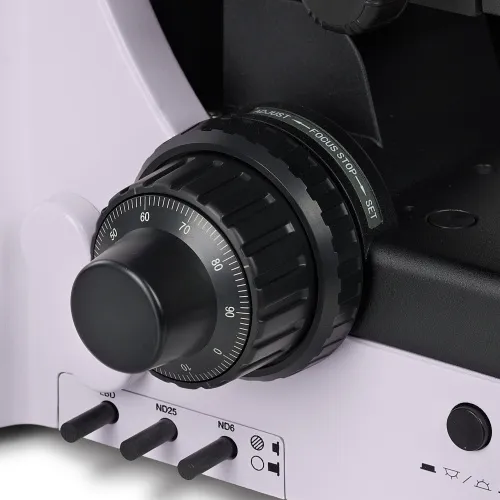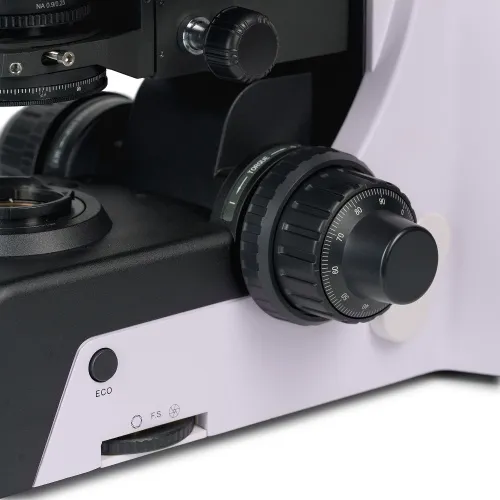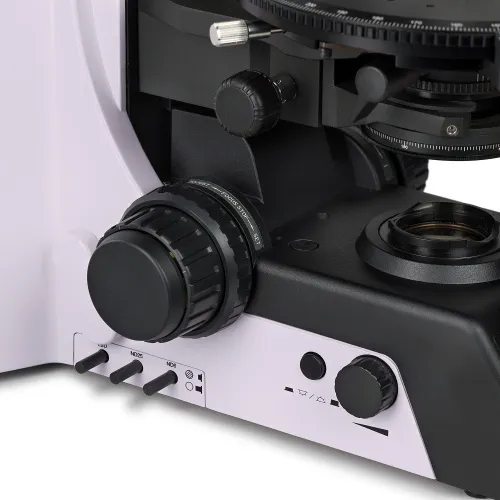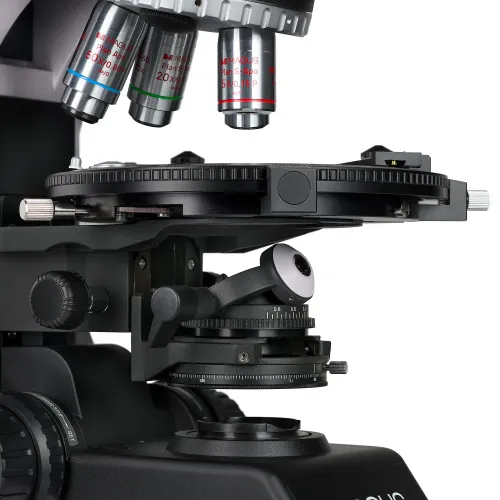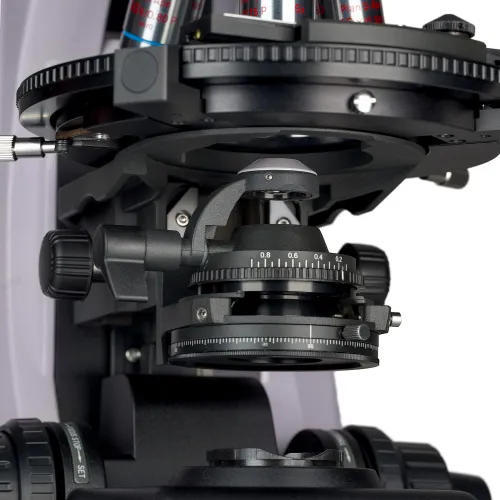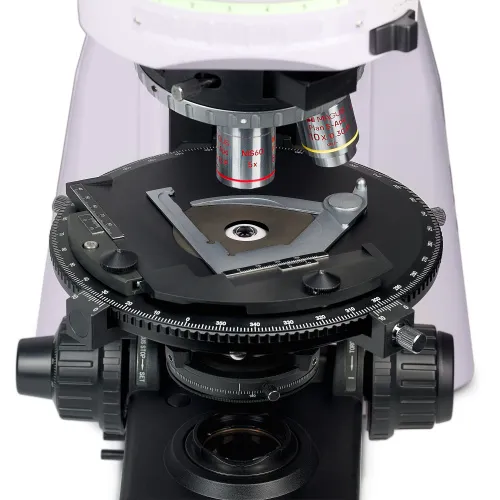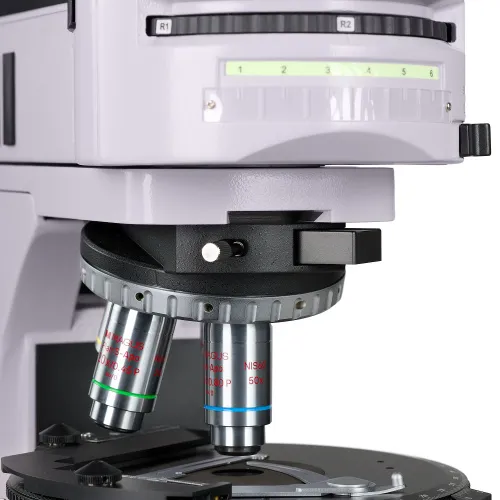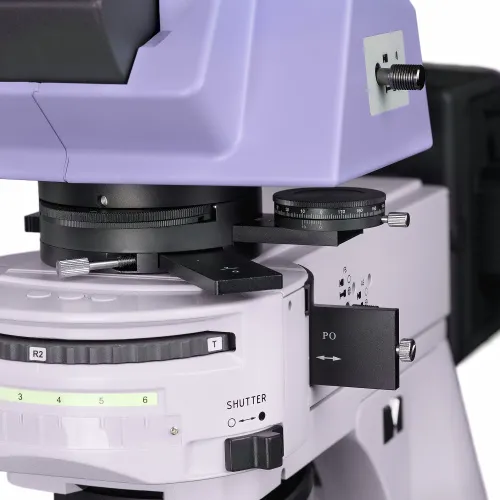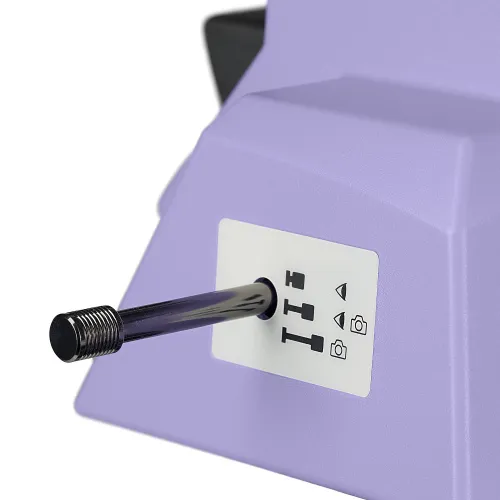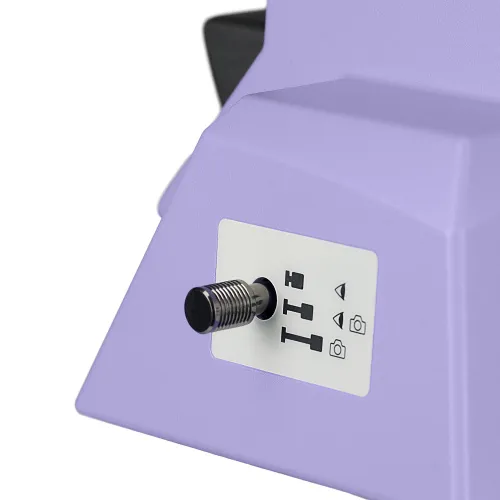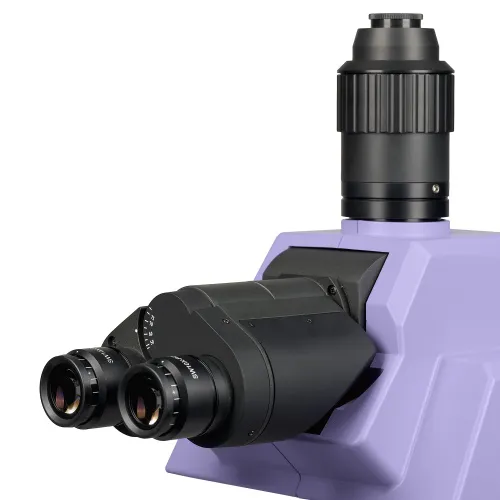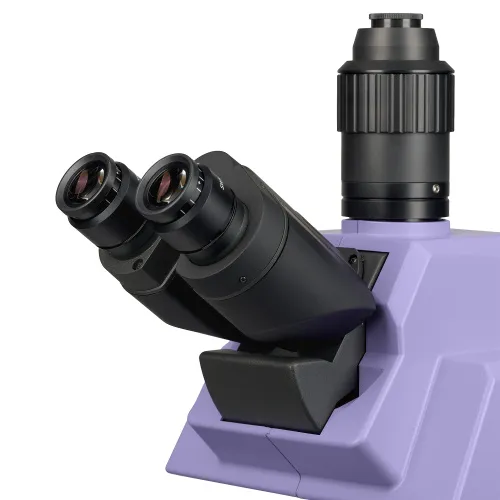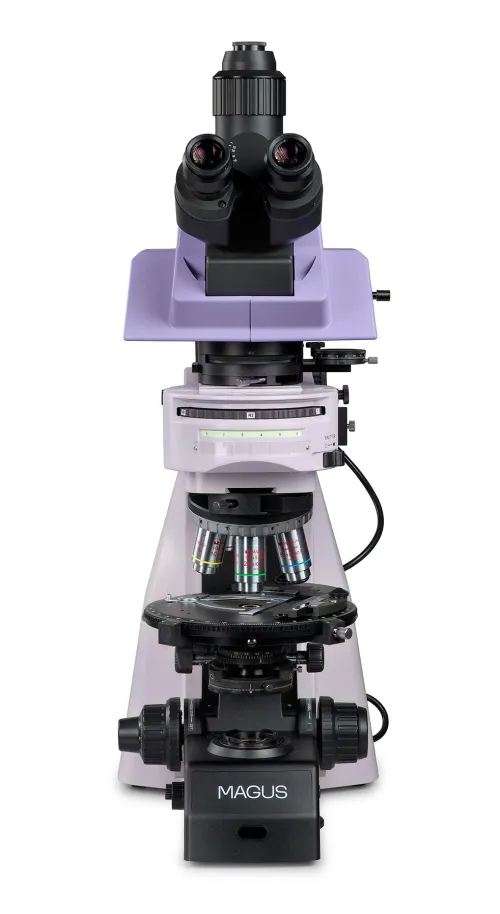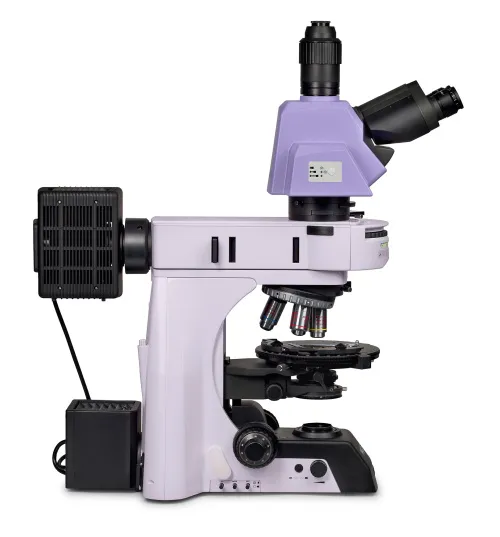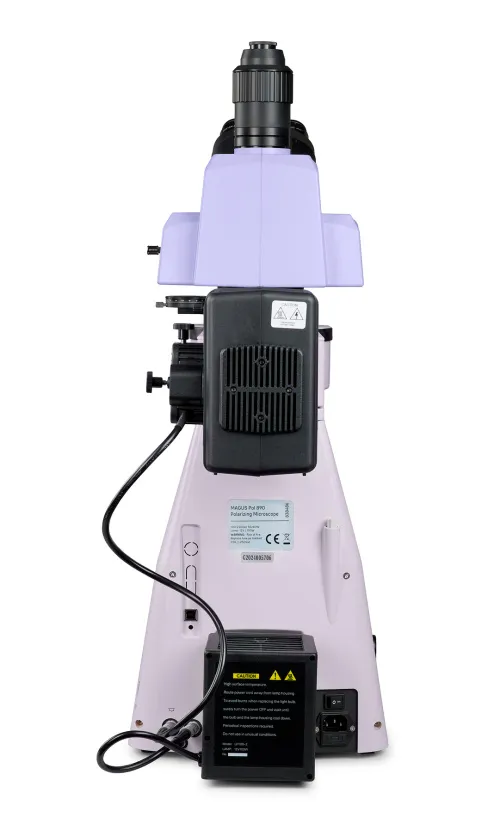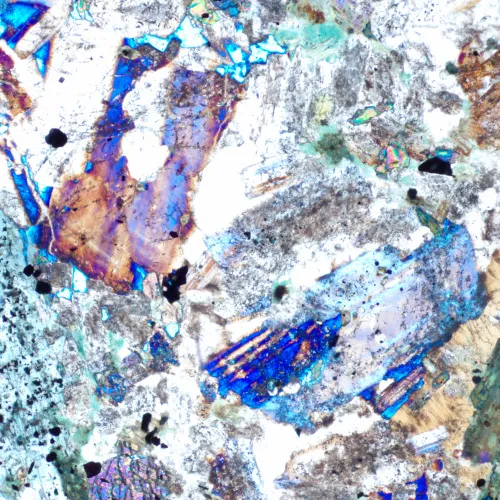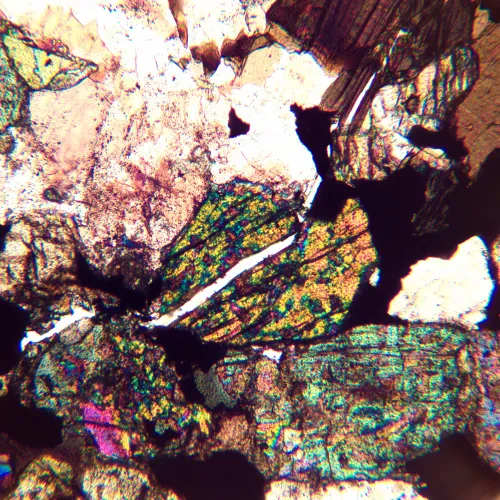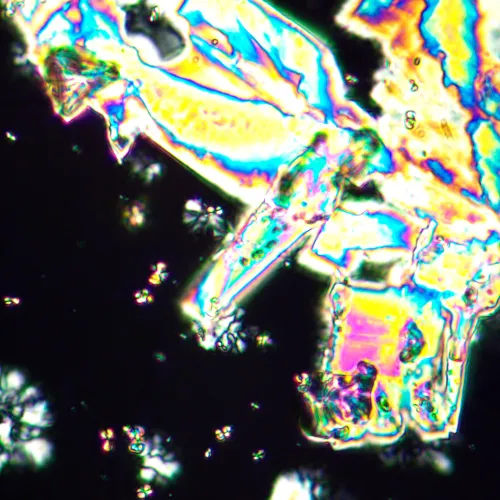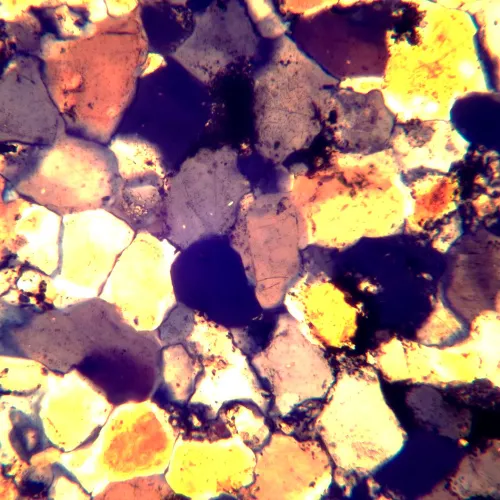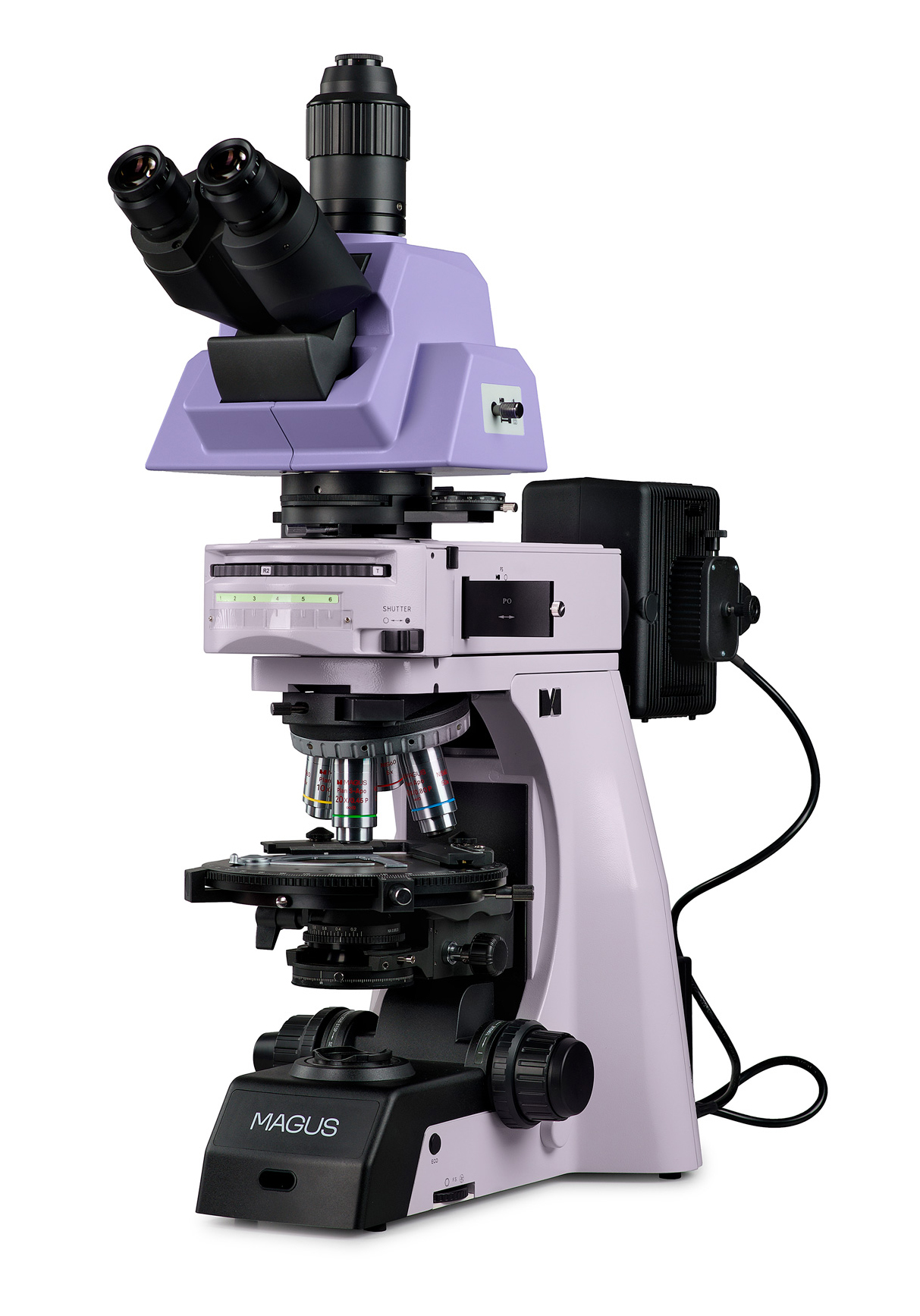MAGUS Pol 890 Polarizing Microscope
Magnification 50–500x. Trinocular head, plan semi-apochromatic and plan apochromatic objectives. Transmitted and reflected light, light sources – 100W halogen bulbs, Köhler illumination in reflected and transmitted light. Bertrand lens and compensators
| Product ID | 83486 |
| Brand | MAGUS |
| Warranty | 5 years |
| EAN | 5905555019529 |
| Package size (LxWxH) | 28.3x29.9x20.9 in |
| Shipping Weight | 68.4 lb |
Microscope for scientific research and industrial inspection.
Designed to study objects in polarized and natural light. Installation of optional components will allow the use of the darkfield and phase contrast methods in transmitted light as well as darkfield, differential interference contrast, and reflected light fluorescence.
In the transmitted light, you can study geological specimens as well as anisotropic biological and polymeric specimens in thin sections.
In the reflected light – polished sections with one polished side. The thickness of the polished sections is arbitrary, usually 5–10mm. The microscope allows you to examine opaque objects up to 30mm thick.
A polarizing microscope uses the birefringence of anisotropic samples to deliver an image. Plane-polarized light, when passing through an anisotropic sample, splits into two rays, and changes the plane of polarization. The analyzer brings the oscillations of the beams into a single plane, which is where they interfere. The bright, high-contrast image changes color when the stage rotates.
The plan semi-apochromatic and plan apochromatic microscope objectives are free from internal strain. The intermediate tube holds the analyzer and Bertrand lens, and it has a slot for compensators.
The microscope is used in crystallography, petrography, mineralogy, forensics, medicine, and other fields of science.
Microscope head
Trinocular head with infinity-corrected optics. The user selects the most comfortable angle of inclination of the microscope head in a range of 0° to 35°. The digital camera is mounted in the trinocular tube. The beam splits 0/100, 100/0, or 80/20. The base kit includes 10x/22mm eyepieces with diopter adjustment and a long eye relief for working with glasses.
Revolving nosepiece
Five objective revolving nosepiece. A free slot is used for centering the light source. The user can also install an additional objective in the free slot of the revolver, which will allow them to obtain additional magnification.
The design of the revolving nosepiece (“toward the interior”) frees up space at the front of the stage, and so the user can see the objective inserted into the optical path. The revolving nosepiece slots are centered to align the optical axis of the objective and microscope.
Objectives
Infinity plan semi-apochromatic and plan apochromatic are specifically designed for polarized light observations: The strain-free optics ensure that the birefringence comes from the sample and not from the optical elements. They provide better correction of chromatic and spherical aberration compared to plan achromatic objectives.
The 5x and 10x objectives are designed to work with or without a cover glass, 20x and 50x objectives are designed to work without a cover glass. The parfocal distance is 60mm.
Turret for installing contrast modules
Above the revolving nosepiece is a turret for installing contrast modules. Six modules can be installed. Rotating the turret changes the observation mode. Switching from one contrast method to another occurs quickly and without complex settings.
Focusing mechanism
The coarse and fine focusing knobs are coaxial and located low. The researcher can place their hands on the table and take a comfortable position in front of the microscope.
The coarse focus lock knob helps you quickly adjust the microscope after changing the subject of study. The knob is located on the left side of the microscope on the same axis as the focusing mechanism.
The ring on the right side adjusts the tension of the coarse focusing travel. The user adjusts the comfortable tension for work.
Stage
The stage rotates 360° to view the color change of the sample when the polarizer and analyzer are in crossed orientation. The stage has a gradation of the rotation angle. With the vernier scale, measurements are made with an accuracy of 0.1°.
The stage can be centered with two screws because the analysis of an anisotropic object in polarized light requires the precise alignment of the rotation axis of the stage with the optical axis of the microscope.
Light source
100W halogen bulbs are used in both reflected and transmitted light illuminators. Halogen bulbs emit light at a color temperature comfortable for the eyes. The 100W lamp is bright enough to work with objectives ranging from 4x to 100x magnification in brightfield and polarized light.
Reflected light illumination
The illumination system makes it possible to set up the Köhler illumination. The field and aperture diaphragm are pre-centered at the factory and require no additional centering. If necessary, the diaphragms can be adjusted with centering screws. The light source is centered along three axes.
The analyzer and polarizer are used for the polarization microscopy technique. The polarizer is stationary, while the analyzer rotates 360° and has a vernier scale for precise angle setting.
A set of filters can help you adjust the color reproduction.
Transmitted light illumination
An adjustable field diaphragm, a centered and height-adjustable condenser with strain-free optics, an adjustable aperture diaphragm, and a flip-down lens realize the Köhler illumination adjustment. The flip-down lens is removed from the optical path for objectives with low magnification and returned back for objectives with magnification greater than 10x. The polarizer is 0–360° rotatable, with four rotation angles of 0°, 90°, 180°, 270° marks on the scale. The analyzer rotates 360°, the vernier scale on the analyzer ensures angle accuracy.
Köhler illumination in reflected and transmitted light
Setting up the Köhler illumination enhances the image quality of a specimen. With such illumination, you achieve maximum resolution on each objective. Even illumination of the field of view with no darkening at the edges. The object of study is in sharp focus, and the image artifacts are removed.
Studying samples in polarized light
The analyzer is inserted into the light path to observe objects in polarized light. As the polarizer and analyzer rotate, the polarization angle changes. When the microscope stage is rotated, the refraction of light by the sample changes depending on the polarization angle.
The Bertrand lens is used for conoscopic studies.
Compensators are designed to enhance the contrast of samples with weak birefringence.
Accessories
There is a line of accessories designed for this microscope.
A digital camera outputs the microscope image to a monitor, store files, and software takes real-time measurements of specimens.
A calibration slide is used to measure objects, and it can be combined with the eyepiece with a scale or with the camera software.
Key features:
- Studies of transparent and opaque anisotropic samples in polarized and natural light
- Powerful 100W halogen transmitted and reflected light illuminators that provide bright natural light
- Orthoscopic observations, Bertrand lens for conoscopic observations, compensators, Köhler illumination in transmitted and reflected light
- Trinocular head with a vertical tube for installing a digital camera and changing the angle of inclination; light beam splitting 0/100, 100/0, or 80/20
- Plan semi-apochromatic and plan apochromatic objectives without internal strains do not introduce false optical effects into the image
- Multifunctional turret with 6 slots for installing modules of different contrast methods
- Convenient alignment of the revolving nosepiece slots and stage
- Rotating round stage with a vernier scale for the precise measurement of the rotation angle, can be fixed in a selected position
The kit includes:
- Stand with built-in power supply, focusing mechanism, stage, condenser mount, and a revolving nosepiece
- Condenser with a flip-down lens
- Reflected light illuminator – attachment with turret and halogen lamphouse
- Transmitted light illuminator – halogen lamphouse
- Trinocular head
- Intermediate attachment with a Bertrand lens and analyzer
- Compensators: λ compensator; λ/4 compensator; quartz wedge
- Infinity plan semi-apochromatic objective: Plan S-Apo 5х/0.15 ∞/–, parfocal height 60mm
- Infinity plan semi-apochromatic objective: Plan S-Apo 10х/0.30 ∞/–, parfocal height 60mm
- Infinity plan semi-apochromatic objective: Plan S-Apo 20х/0.45 ∞/0, parfocal height 60mm
- Infinity plan apochromatic objective: Plan Apo 50х/0.80 ∞/0, parfocal height 60mm
- Eyepiece 10x/22mm with long eye relief and diopter adjustment (2 pcs.)
- Eyepiece eyecup (2 pcs.)
- C-mount camera adapter
- Power cord
- Dust cover
- User manual and warranty card
Available on request:
- Infinity plan apochromatic objective: Plan Apo 100х/0.9 ∞/0, parfocal height 60mm
- Digital camera
- Calibration slide
| Product ID | 83486 |
| Brand | MAGUS |
| Warranty | 5 years |
| EAN | 5905555019529 |
| Package size (LxWxH) | 28.3x29.9x20.9 in |
| Shipping Weight | 68.4 lb |
| Type | biological, light/optical |
| Microscope head type | trinocular |
| Head | Siedentopf, beam splitting 0/100, 100/0, 80/20 |
| Head inclination angle | 0–35°, adjustable |
| Magnification, x | 50 — 500 |
| Magnification, x (optional) | 50–1000 |
| C-mount adapter magnification, x | 1 |
| Eyepiece tube diameter, in | 1.2 |
| Objectives | plan semi-apochromatic and plan apochromatic objectives, strain-free, infinity-corrected (∞): 5х/0.15; 10х/0.30; 20х/0.45; 50х/0.80, parfocal height 60mm (*optional: 100x/0.9) |
| Revolving nosepiece | for 5 objectives, centering |
| Interpupillary distance, in | 1.9 — 3.1 |
| Stage, mm | Ø190 |
| Stage moving range, mm | 30/30 |
| Stage features | 1° rotation angle graduation, centering, fixable, overhead specimen holder, rotatable 360°, vernier scale for measuring angles with an accuracy of 0.1° |
| Eyepiece diopter adjustment, diopters | ±5D on each eyepiece |
| Eyepiece diopter adjustment | ✓ |
| Condenser | centered and height-adjustable condenser NA 0.9/0.25 with adjustable aperture diaphragm and flip-down lens; strain-free optics |
| Diaphragm | adjustable aperture diaphragm, adjustable iris field diaphragm |
| Focus | coaxial, coarse (35mm, with a lock knob and tension adjusting knob) and fine (0.001mm) |
| Illumination | halogen |
| Brightness adjustment | ✓ |
| Power supply | 100–240V, 50/60Hz (US type plug adapter is not included), AC network |
| Light source type | reflected and transmitted light: halogen lamp 12V/100W |
| Operating temperature range, °F | 50...+95 |
| User level | experienced users, professionals |
| Assembly and installation difficulty level | complicated |
| Polarizer | reflected light: polarization module in the turret, transmitted light: with 0°, 90°, 180°, 270° marks on the scale; 360° rotatable |
| Intermediate tube | Bertrand lens, analyzer with 0–360° rotation and scale, slot for installing compensators, switching conoscopic/orthoscopic observations |
| Compensator | λ compensator; λ/4 compensator; quartz wedge |
| Application | laboratory/medical |
| Illumination location | dual |
| Research method | bright field, polarization |
| Pouch/case/bag in set | dust cover |
We have gathered answers to the most frequently asked questions to help you sort things out
Find out why studying eyes under a microscope is entertaining; how insects’ and arachnids’ eyes differ and what the best way is to observe such an interesting specimen
Read this review to learn how to observe human hair, what different hair looks like under a microscope and what magnification is required for observations
Learn what a numerical aperture is and how to choose a suitable objective lens for your microscope here
Learn what a spider looks like under microscope, when the best time is to take photos of it, how to study it properly at magnification and more interesting facts about observing insects and arachnids
This review for beginner explorers of the micro world introduces you to the optical, illuminating and mechanical parts of a microscope and their functions
Short article about Paramecium caudatum - a microorganism that is interesting to observe through any microscope


